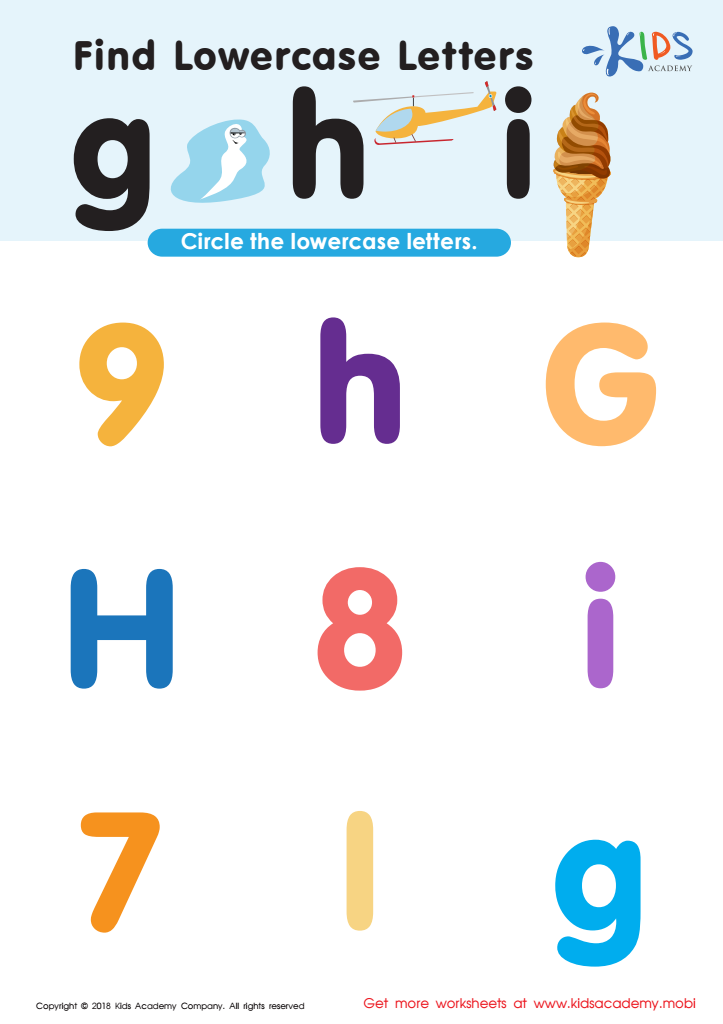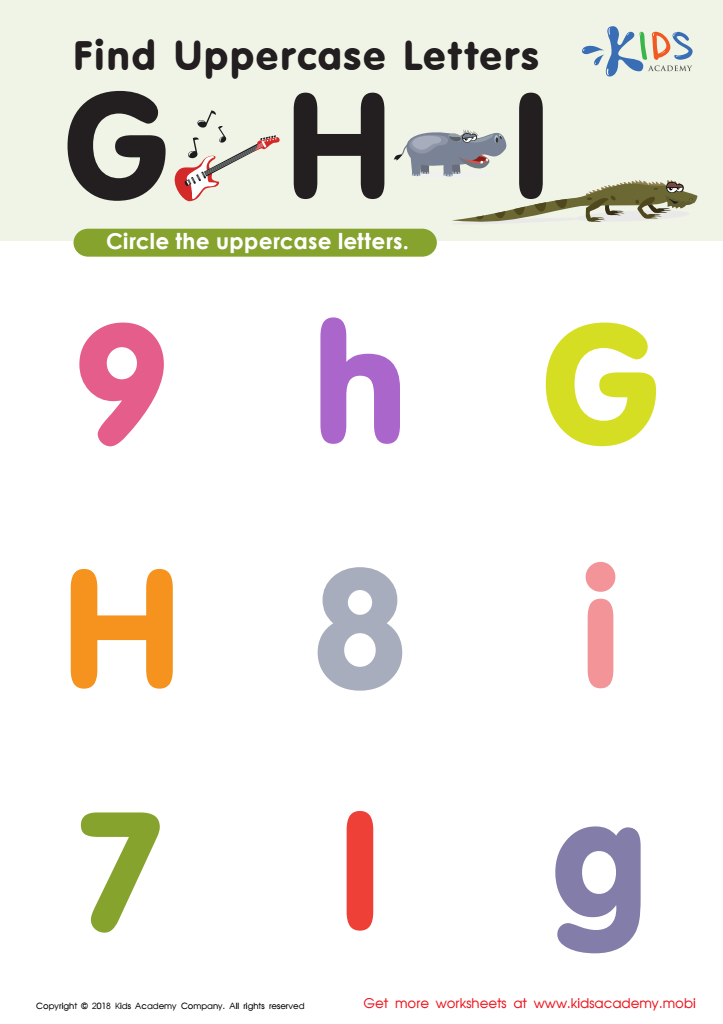Visual discrimination Normal Letter Recognition Worksheets for Ages 5-8
4 filtered results
-
From - To
Unlock your child's potential with our Visual Discrimination Normal Letter Recognition Worksheets, designed specifically for ages 5-8! These engaging and educational resources help young learners enhance their letter recognition skills through fun activities. Each worksheet focuses on sharpening visual discrimination abilities, enabling children to distinguish between similar letters and differentiate shapes effectively. With vibrant illustrations and interactive tasks, learning becomes an enjoyable adventure! Perfect for homeschooling or classroom settings, our worksheets support various learning styles, ensuring every child can triumph. Explore our collection and give your child the foundation they need for literacy success. Start their learning journey today!


Find Lowercase Letters g h i Worksheet


Find Uppercase Letters G, H, and I Worksheet


Find Lowercase Letters y z Worksheet


Find Uppercase Letters V, W, X Worksheet
Visual discrimination and normal letter recognition are critical skills for children aged 5-8 as they form the foundation for future learning, particularly in literacy. Visual discrimination enables children to differentiate between similar shapes and patterns, which is essential in identifying letters that may look alike, such as "b" and "d" or "p" and "q." Early mastery of these skills can prevent confusion later in their learning journeys, leading to more confident readers and writers.
Parents and teachers should prioritize these skills, as they directly impact children's ability to decode words, leading to improved reading fluency and comprehension. When children can recognize letters quickly and accurately, they are more likely to engage with texts meaningfully, fostering a love for reading. This engagement is crucial for developing vocabulary and critical thinking skills.
Moreover, supporting visual discrimination and letter recognition early on can reduce frustrations and challenges in academic performance, contributing to a more positive learning experience. It can boost self-esteem and motivation, as children experience success in their literacy skills. Therefore, addressing visual discrimination through targeted activities contributes significantly to a child's overall educational development, setting the stage for lifelong learning.
 Assign to My Students
Assign to My Students
















